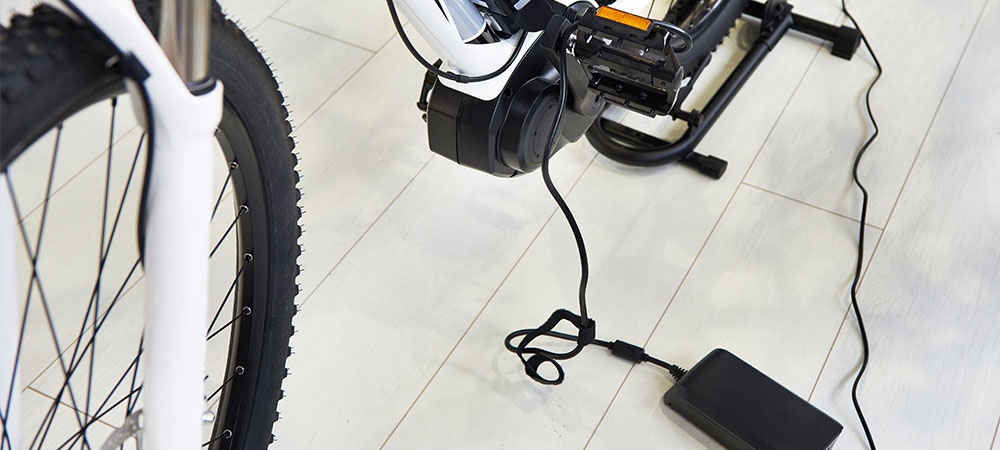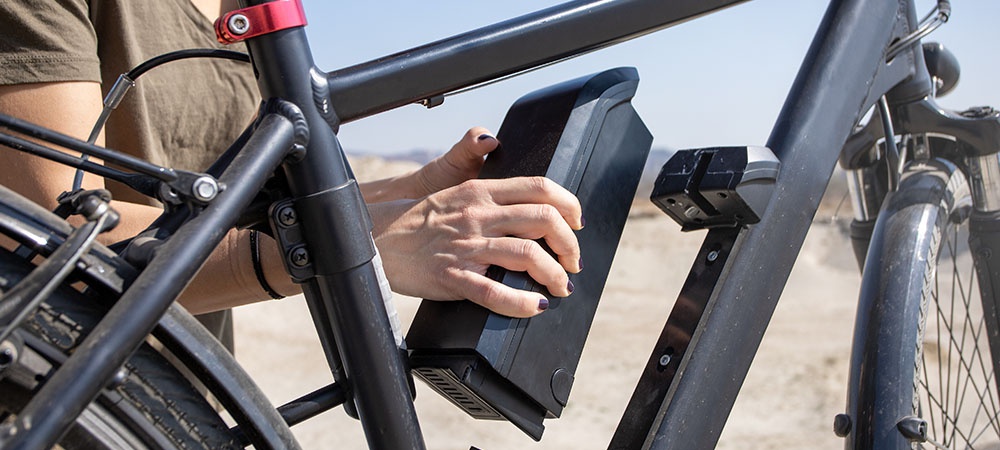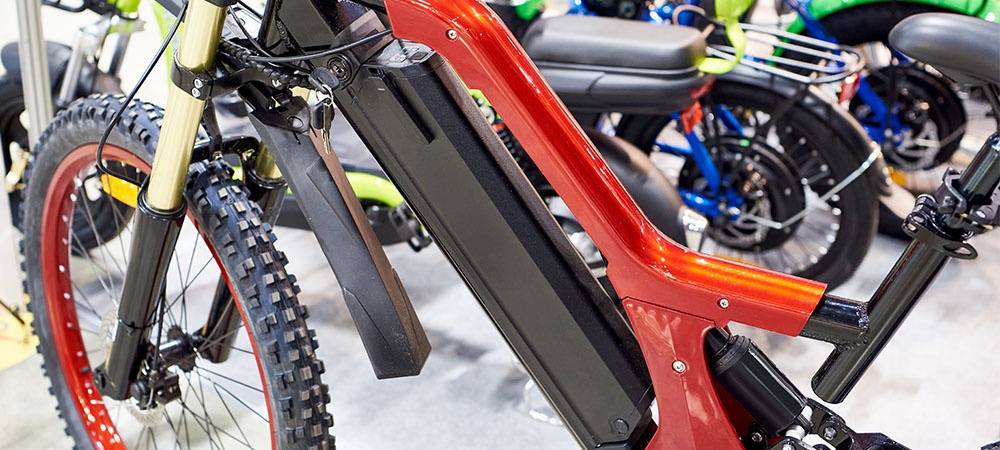Are you considering buying or building an ebike but are unsure of which battery type and size to choose? Choosing the right battery will have a huge impact on your e-bike’s performance, range, speed and cost.
Here we will look at the different types of batteries available for e-bikes, as well as how to make sure that you get the right one for you. By the end, you’ll have a clear idea of the perfect battery for your ebike. Let’s get started.
How to Choose the Right Ebike Battery Type and Size
When choosing the right ebike battery type and size for your particular bike, you’ll want to take into account a variety of factors such as your intended use of the battery, how far you need to travel and the terrain near where you live.
Different bikes require different battery types, capacities, and sizes. On top of that, you may have additional needs if your ebike will be used for racing, commuting or off-road use.
Finally, consider the climate conditions in which you will be biking. For example, cold weather requires more power and therefore a larger capacity battery to provide adequate power.
Before choosing your ebike battery, it’s important to consider all the relevant features. Let’s take a look at what they are.

Factors When Choosing an Ebike Battery
Range – Most e-bikes are designed for daily commuting or recreational use, so having a battery that can cover your desired distance without needing frequent recharging is vital.
Range not only indicates the longevity of the battery but also its overall performance. Higher-end batteries with longer ranges are able to provide more power with less energy consumption, giving riders enhanced performance on hills and allowing them to go further before recharging.
Therefore, it’s important to keep a range in mind when choosing your ebike battery so you can get the best value and experience out of your ebike.
Speed – When it comes to selecting the right ebike battery, considering the speed capabilities should not be a major factor in determining what is best for you.
Instead, you should focus on other factors. Most ebikes are pedal-assisted and they’ll stop providing support after a certain speed. Ebikes are more about easily getting you from A to B instead of giving you a thrilling ride.
While speed may be an attractive feature, making sure your ebike battery has all the qualities you need will ensure that you obtain long-term value and satisfaction with your battery.
Durability – A battery must be able to withstand the elements such as rain, snow, and extreme temperatures so you can safely ride your bike year-round.
Durability is especially important if you plan to use your ebike in off-road or challenging terrain because it will likely take a beating.
To ensure maximum efficiency and longevity of your battery, make sure it offers waterproof protection and an adequate temperature range. Investing in a durable ebike battery will ultimately save you time and money in the long run.
Location – When choosing your ebike battery, where you live and the terrain you will be riding on should be considered.
Batteries designed for a flat landscape would not be suitable if you live near hilly areas. You’ll need a more powerful battery, as trying to climb steep terrain can severely deplete your battery.
Additionally, riders who live in warm climates should ensure their batteries can withstand high temperatures. Conversely, those living in cold locations need to be aware that cold weather has a detrimental effect on both battery life and power output.
Charge Points – If you intend to ride your electric bike regularly, you will need to ensure that you have regular access to an adequate charging facility. For example, consider whether or not you’ll be able to charge your ebike at work.
Furthermore, charging facilities are not always available on the go and should be considered when determining how far away from home you can safely ride your electric bike.
Ultimately, considering where you can charge your ebike battery is key in order to make sure that your rides are safe and enjoyable.
Weight – The battery you choose for your electric-assisted bike can be the single most important decision you make, and your weight plays a large role in that.
For optimal performance, you have to consider how much energy the battery will need to propel you up steep hills and through long rides. The more you weigh, the harder the ebike will need to work. This can significantly decrease the advertised range.
Cost – Choosing an ebike battery according to your budget is an essential consideration, as it will determine the level of performance and features you get. If you set aside too little money for the battery, you may be faced with poor-quality components that won’t offer a good range or performance.
On the other hand, there is no point in bankrupting yourself for a battery that is too powerful for your needs.
It is important to research ebike batteries and their prices carefully before deciding how much of your budget should be allocated toward them. Spending within your means will ensure that you get an optimal ebike experience without sacrificing other important needs in your life.

Volts, Amps, and Watts
To understand what battery you need to get, it helps to understand volts, amps and watts, and the relationship between them. Here we’ve tried to make it as simple as possible.
Volts – This is a measure of electric pressure but it’s easier to think about it as speed. The higher the volts, the faster the power is being supplied. Low voltage is an old car going down a highway, high volts is a brand new supercar.
Amps – Amps are the size of the highway. The more lanes, the more traffic can travel down it. Low amperage just means one car is coming through, high amperage means a huge multi-lane highway. The higher the amps, the more electricity is allowed to come through.
Watts – Watts are these two things multiplied by each other. An old car going down a single road is low watts, 100 supercars going down a highway would be high wattage.
Usually, high watts and amps go hand-in-hand. For example, there’s no point in building a huge electrical freeway for a bunch of slow cars. However, there are differences.
For example, a 48V battery may have 13Ah or 20Ah. An Ah (amp hour) is a measure of how much amperage is provided over an hour. The higher it is, the more electric traffic is coming through.
Hopefully, that gives you a basic understanding of the terms when you’re looking at different batteries. Next, we’ll see what voltage of battery you should choose.

Which Voltage Should You Choose?
We see ebikes rated in volts, amps, amp hours, watt hours, and watts, which can be confusing. The most common (and usually the first) figure you’ll see is volts. To simplify it, we’ll see what you can expect from different voltages of e-bikes.
24v – This is on the low end of the battery scale. With these ebikes, you’ll often get an advertised range of around 15 miles.
36v – This is perhaps the most common voltage level for batteries as it balances power with affordability. Often here you’ll get an advertised range of around 20 to 25 miles.
48v and 52v – These voltage levels will often give you around 30 to 35 miles of range on a single charge. These are high-end ebikes which are capable of providing impressive power.
72v – batteries this big are rarely seen on commercial ebikes but you can pick them up fairly easily. You’ll often get a range of over 40 miles here.
It’s important to note that the ranges we’ve stated here are very rough estimates. All these batteries may have different amps too, and that’s important to take into account, especially if you need a battery to power you up hills.
Lead-Acid or Nickel or Lithium Battery?
Deciding which type of battery to use on your electric bike can be a difficult decision. All types of batteries have their own unique characteristics and the choice should depend on the application it will be used for and the conditions you intend to ride in.
For example, Nickel-Metal Hydride (NiMH) batteries are a great option if you frequently travel over long distances because they provide longer run times. However, Lithium-ion (Li-ion) batteries are more lightweight so they’re suitable for bikes that need to climb tougher hills.
Lead-acid batteries are cheap but very heavy, which is why they are rarely used in modern ebikes. Whatever you choose, make sure to bear in mind the type of terrain you’re likely to ride on, how far you plan on travelling with it, and your budget.

Final Thoughts
If you want to choose the perfect battery, then it helps to know a little about voltage and amps. With that, you can then consider all the important factors that go into choosing a battery. Hopefully, now you have all the info you need to choose your perfect ebike battery.




















